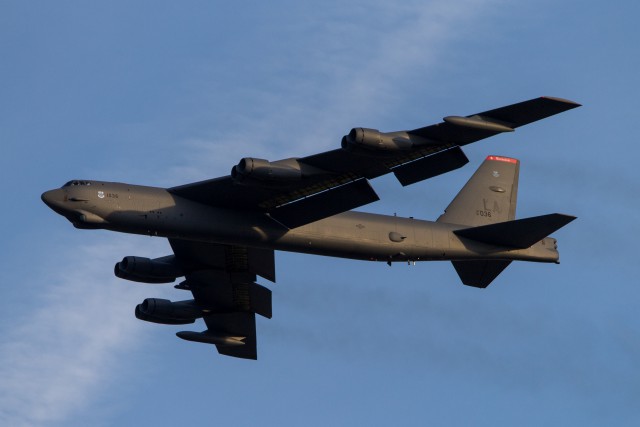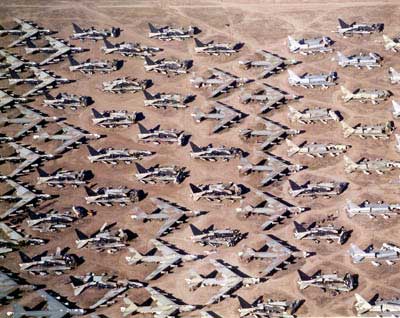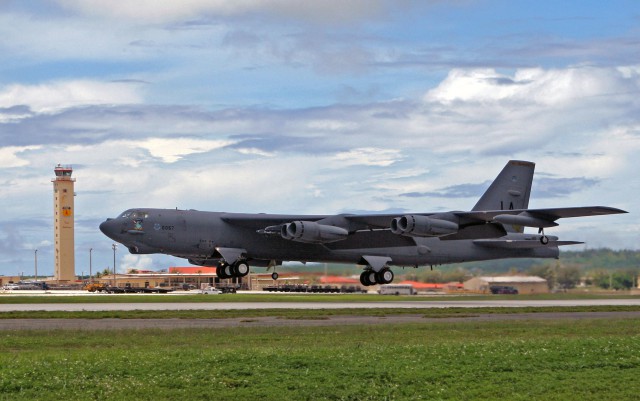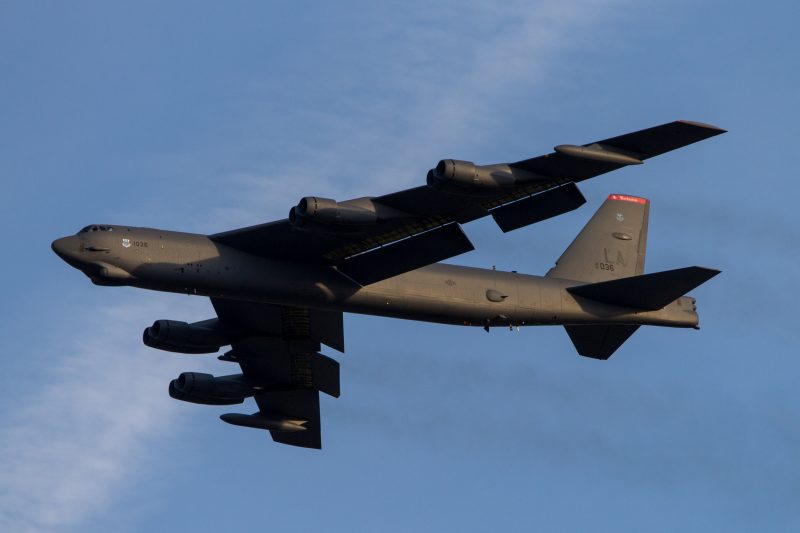
A B-52 Stratofortress bomber has been renovated at Barksdale Air Force Base in Louisiana, USA. The aircraft, along with a number of vintage World War Two planes, is being rescued and is now in good enough condition to keep flying for another 25 years. The B-52’s current pilot is Captain Lance Adsit, who is just 25 years old. He says it is like going back in time, but he loves flying the huge bomber.
The B-52 is the US Air Force’s biggest bomber and still flies as good as it did 60 years ago. The equipment, from gauges to dials to buttons, was all originally built during the years of the Eisenhower administration, but it continues to work well to this day.
Beginning with the successful contract bid in June 1946, the B-52 design evolved from a straight wing aircraft powered by six turboprop engines to the final prototype YB-52 with eight turbojet engines and swept wings. The B-52 took its maiden flight in April 1952. Built to carry nuclear weapons for Cold War-era deterrence missions, the B-52 Stratofortress replaced the Convair B-36. A veteran of several wars, the B-52 has dropped only conventional munitions in combat.
It was the B-52 that dropped the first hydrogen bomb during the testing phase in 1956 at Bikini Atoll. Over 50 years later, it dropped laser-guided bombs in Afghanistan during the early 2000s. Today, the B-52 may be used in the current conflict in Syria.

Some of the renovation work has brought the aircraft more up-to-date, including microchips and even the removal of inbuilt ashtrays that were once standard. The plane has eight engines and the wings are still connected by cables. The navigator even charts the aircraft’s course using a slide rule.
B-52s were scheduled to be retired many years ago, but they are still being upgraded and continuing to be deployed for military combat today.
Around half of the Air Force’s B-52s are based at Barksdale Air Force Base in Louisiana and they are all in their 60th year of flying service. There are around 76 B-52s, which make up the majority of the US Air Force’s long-range bomber squadron. There are no plans to bring them out of service any time soon.

The B-52 has survived for so many years due to its design; it can be used anywhere in the world and drop any bomb the US Government requires. The B-52’s nickname is the BUFF among crew members, which stands for Big Ugly Fat Fellow.
The B-52 completed fifty years of continuous service with its original operator in 2005; after being upgraded between 2013 and 2015, it is expected to serve into the 2040s, nearly 90 years after the B-52 first entered service, an unprecedented length of service for any aircraft, civilian or military.
The Long Range Strike Bomber program is intended to yield a stealthy successor for the B-52 and B-1 that would begin service in the 2020s; it is intended to produce 80 to 100 aircraft.
